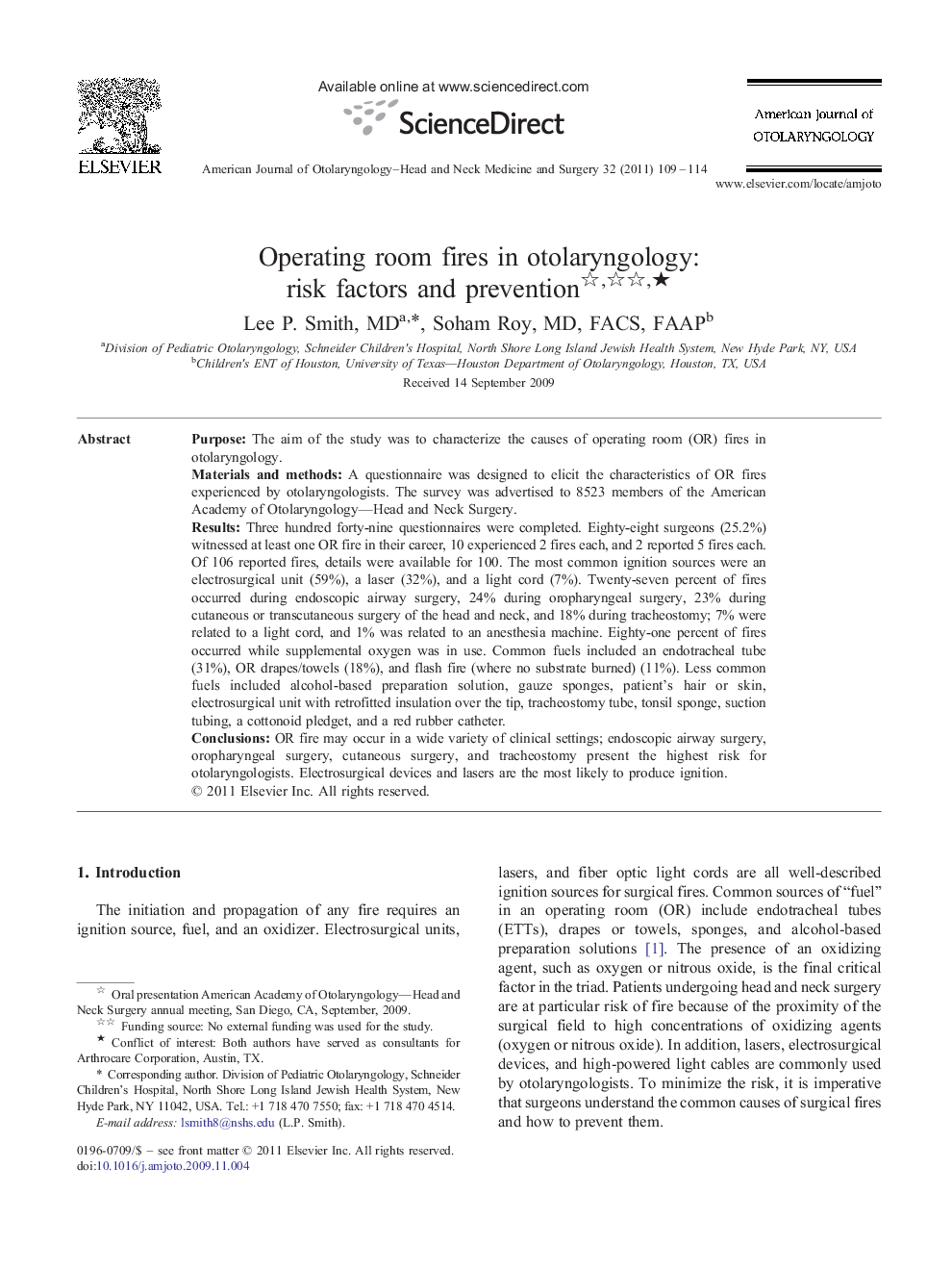| کد مقاله | کد نشریه | سال انتشار | مقاله انگلیسی | نسخه تمام متن |
|---|---|---|---|---|
| 4103603 | 1605262 | 2011 | 6 صفحه PDF | دانلود رایگان |

PurposeThe aim of the study was to characterize the causes of operating room (OR) fires in otolaryngology.Materials and methodsA questionnaire was designed to elicit the characteristics of OR fires experienced by otolaryngologists. The survey was advertised to 8523 members of the American Academy of Otolaryngology—Head and Neck Surgery.ResultsThree hundred forty-nine questionnaires were completed. Eighty-eight surgeons (25.2%) witnessed at least one OR fire in their career, 10 experienced 2 fires each, and 2 reported 5 fires each. Of 106 reported fires, details were available for 100. The most common ignition sources were an electrosurgical unit (59%), a laser (32%), and a light cord (7%). Twenty-seven percent of fires occurred during endoscopic airway surgery, 24% during oropharyngeal surgery, 23% during cutaneous or transcutaneous surgery of the head and neck, and 18% during tracheostomy; 7% were related to a light cord, and 1% was related to an anesthesia machine. Eighty-one percent of fires occurred while supplemental oxygen was in use. Common fuels included an endotracheal tube (31%), OR drapes/towels (18%), and flash fire (where no substrate burned) (11%). Less common fuels included alcohol-based preparation solution, gauze sponges, patient's hair or skin, electrosurgical unit with retrofitted insulation over the tip, tracheostomy tube, tonsil sponge, suction tubing, a cottonoid pledget, and a red rubber catheter.ConclusionsOR fire may occur in a wide variety of clinical settings; endoscopic airway surgery, oropharyngeal surgery, cutaneous surgery, and tracheostomy present the highest risk for otolaryngologists. Electrosurgical devices and lasers are the most likely to produce ignition.
Journal: American Journal of Otolaryngology - Volume 32, Issue 2, March–April 2011, Pages 109–114